It's been a couple weeks since Mayor Breed submitted the Save Our Small Business ballot measure. I really like what I've read in it.
sfgov.legistar.com/LegislationDet…
sfgov.legistar.com/LegislationDet…
This is the presentation Rich Hillis, Director of Planning, gave before the Small Business Commission on June 22.
It contains an easily digestible summary of the legal text.
sfosb.org/sites/default/…
It contains an easily digestible summary of the legal text.
sfosb.org/sites/default/…

The ordinance starts with findings. And as the numbers show, San Francisco is not helping small businesses to open. It can take two years for a business owner to complete the permit process 😬
https://twitter.com/Sharkyl/status/1275450960777629698
COVID-19 has hurt San Francisco businesses unbelievably hard.
Seventy-five percent of businesses report a significant impact.
Over half of San Francisco businesses have laid off employees.
Unemployment is around 16%.
Seventy-five percent of businesses report a significant impact.
Over half of San Francisco businesses have laid off employees.
Unemployment is around 16%.

Shockingly, the findings get worse: half of all San Francisco restaurants could close for good.
We face a dire, unparalleled crisis: we could not only lose half of our restaurants and a huge number of stores, but our permit system would keep those storefronts empty for years.
We face a dire, unparalleled crisis: we could not only lose half of our restaurants and a huge number of stores, but our permit system would keep those storefronts empty for years.

After the findings, changes to the Planning Code start. First is a new section, Section 32, which streamlines permit review. It applies to Neighborhood Commercial District (NCD) and Neighborhood Commercial Transit (NCT) zones. These districts encompass SF’s retail corridors. 

Section 32 would require that Planning, DBI, SFFD, DPW, and the Health Department all review complete permit applications within 30 days.
That 30-day deadline is important, because right now Planning staff generally have a backlog of 2–3 months. 😬
That 30-day deadline is important, because right now Planning staff generally have a backlog of 2–3 months. 😬
https://twitter.com/_fruchtose/status/1271534998672138240
Section 32 also caps inspection waiting times at two weeks. This may not seem like it would be necessary, but it is. Last year, the Chronicle reported a case where it took several months for the Fire Department to inspect a restaurant.
sfchronicle.com/restaurants/ar…
sfchronicle.com/restaurants/ar…
The ordinance requires the City to remedy permitting errors, possibly to prevent a repeat of #PalmCityWines. Planning told a small business they didn’t need certain review. PCW’s only recourse was to submit a new permit application, which would have bankrupted them. 

The 1st definition change applies to restaurants (“bona fide eating places”). Currently a business is a BFEP when 51% of sales are for food. SOSB could relax that requirement to $4,200 worth of food sales per year. Margins on alcohol sales are higher and keep restaurants afloat. 

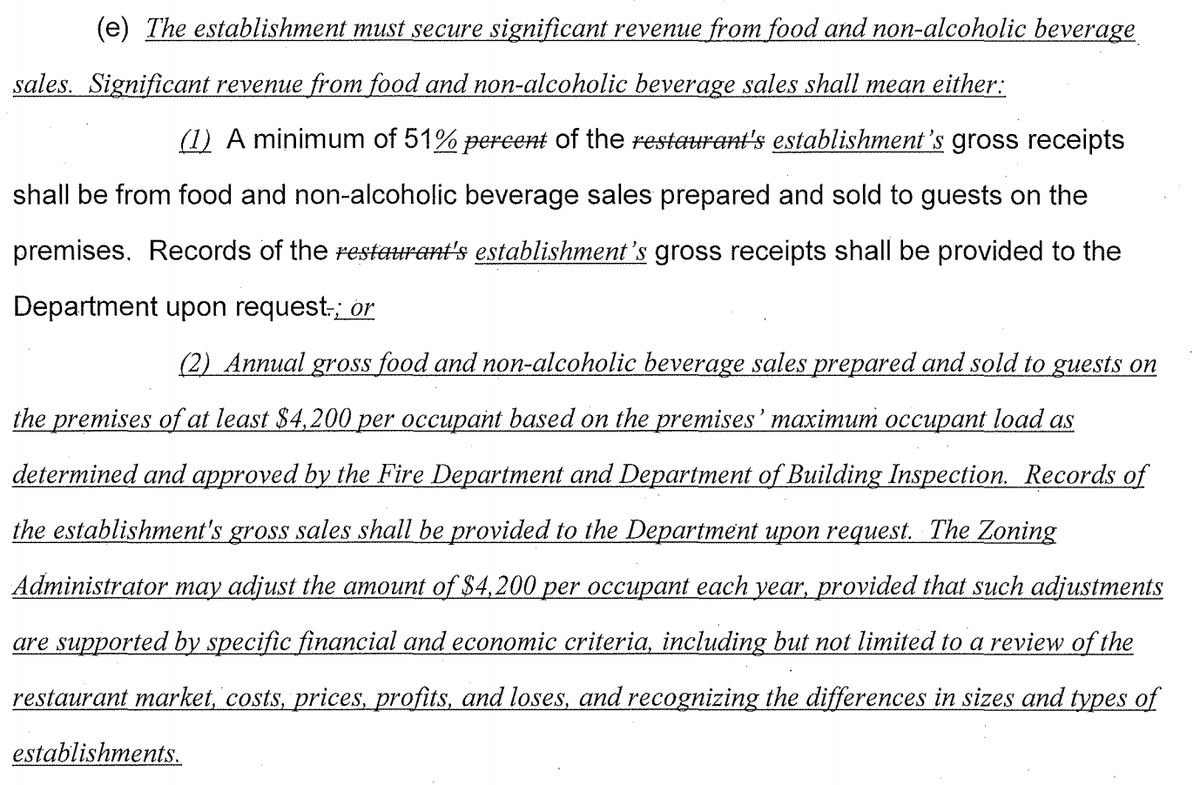

This part reminds me of the case of @WorkshopCafe, a cafe which offered workspace rentals. It closed after the Board of Appeals ruled that it was actually an office.
sfgov.org/bdappeal/sites…
sfgov.org/bdappeal/sites…
In that instance, the Planning Department argued that the workspaces took up too much space, at 64% of the floor area [1st image].
SOSB would allow the workspaces regardless of floor area during the daytime [2nd image].

SOSB would allow the workspaces regardless of floor area during the daytime [2nd image].

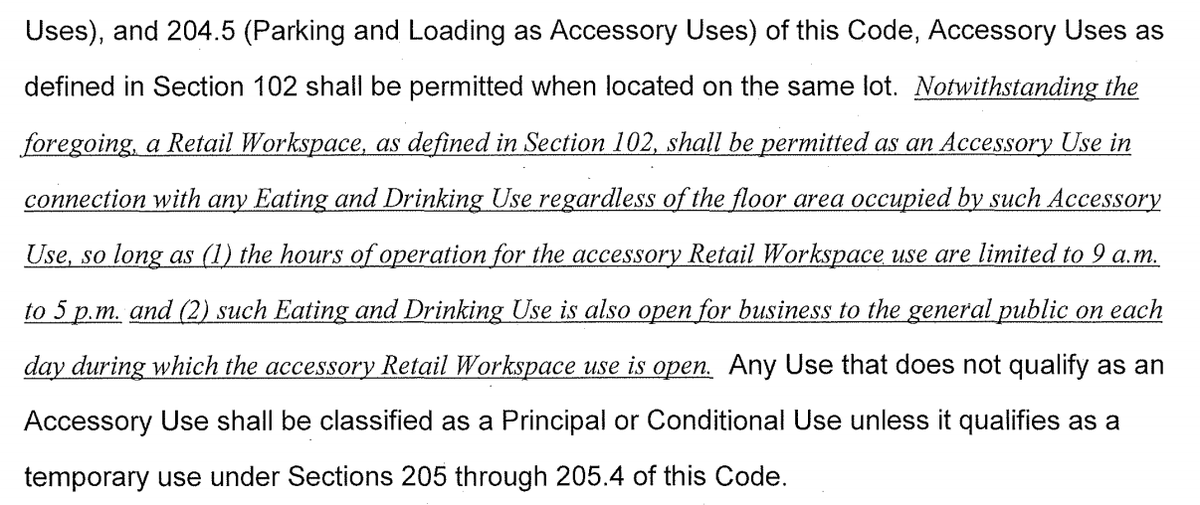
This looks like an attempt to create more "third places" for professionals to work. @mollysturner explained the concept behind these spaces at the recent "Texodus" panel put on by @TECollab.
https://twitter.com/_fruchtose/status/1276233339679019008
SOSB next allows nonprofit offices to be a Principle Use (by-right permission) in places where zoning already allows by-right nonprofit activity. 

When the Board of Supervisors raised the fees on new office construction last year, one criticism was that the decline in office construction could push out nonprofits. By allowing nonprofits to have office space in neighborhood commercial zones, that problem could be avoided. 
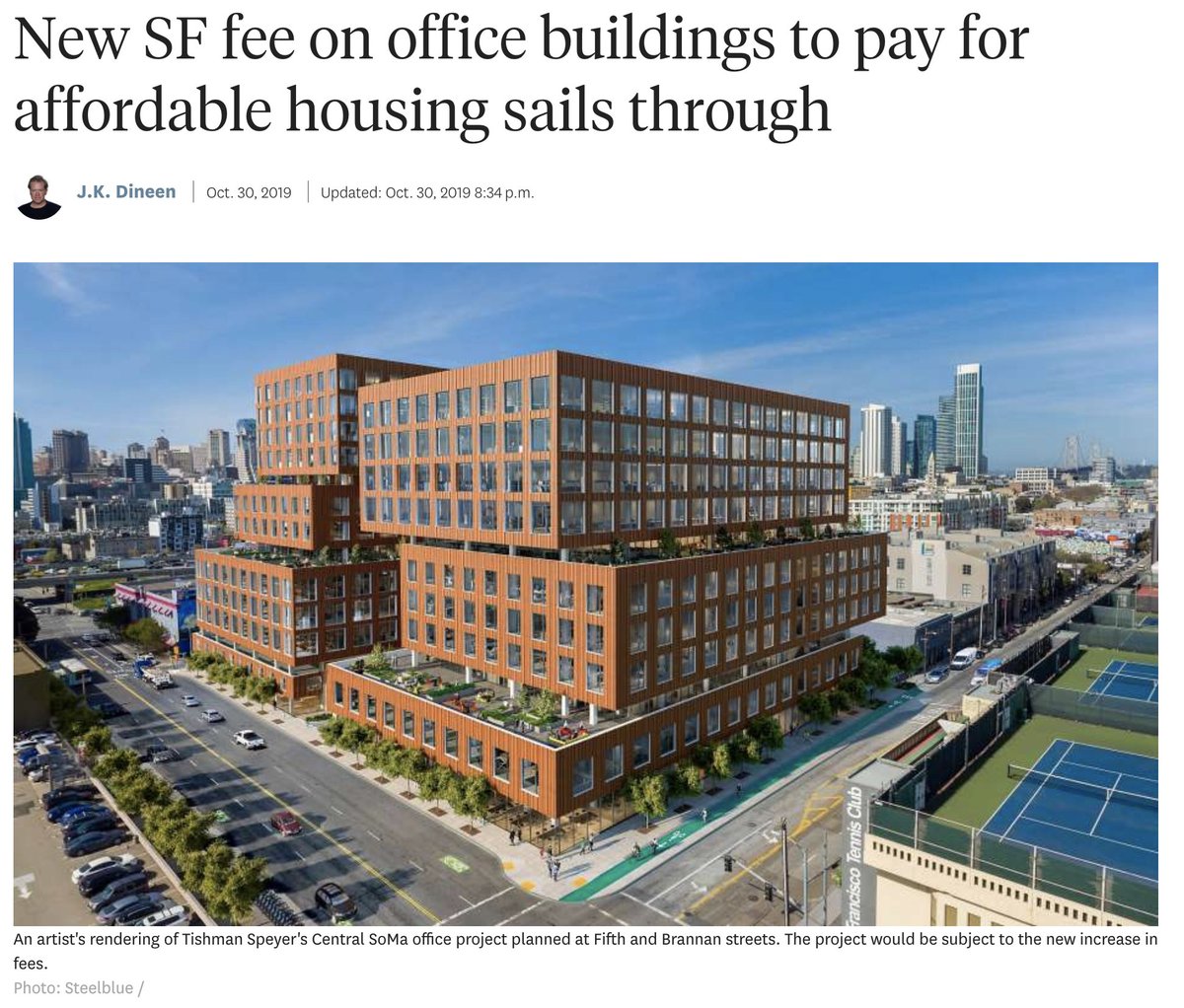
The ordinance also makes some important changes to temporary use permits. First, an existing permitted business may apply for a temporary use permit of some other kind, without losing its original status. 

Article 1.7 says how operating conditions may "abandon" a permit. For instance, a Flexible Retail permit is considered abandoned if it's not used as such for 90 days. But with SOSB, a temporary permit in a Flexible Retail space wouldn't affect it until the temporary use expires. 



That provision took some time for me to understand. I think it could make it easier for businesses to try new ventures without losing their permits. The Flexible Retail use itself came out of legislation passed by @SupervisorTang in 2018.
sfweekly.com/news/anything-…
sfweekly.com/news/anything-…
The ordinance also requires the Office of Economic and Workforce Development to write a report describing what changes have to be made for other departments to allow temporary use permits.
It's great when the BOS asks for updates on the bills they pass. It's good governance.
It's great when the BOS asks for updates on the bills they pass. It's good governance.

The last permitting change is the biggest one: Section 311. SOSB says that changes of use for principally permitted uses do not have to send out mailers, and that 𝗗𝗶𝘀𝗰𝗿𝗲𝘁𝗶𝗼𝗻𝗮𝗿𝘆 𝗥𝗲𝘃𝗶𝗲𝘄𝘀 𝗰𝗮𝗻𝗻𝗼𝘁 𝗯𝗲 𝗳𝗶𝗹𝗲𝗱 against these businesses. 

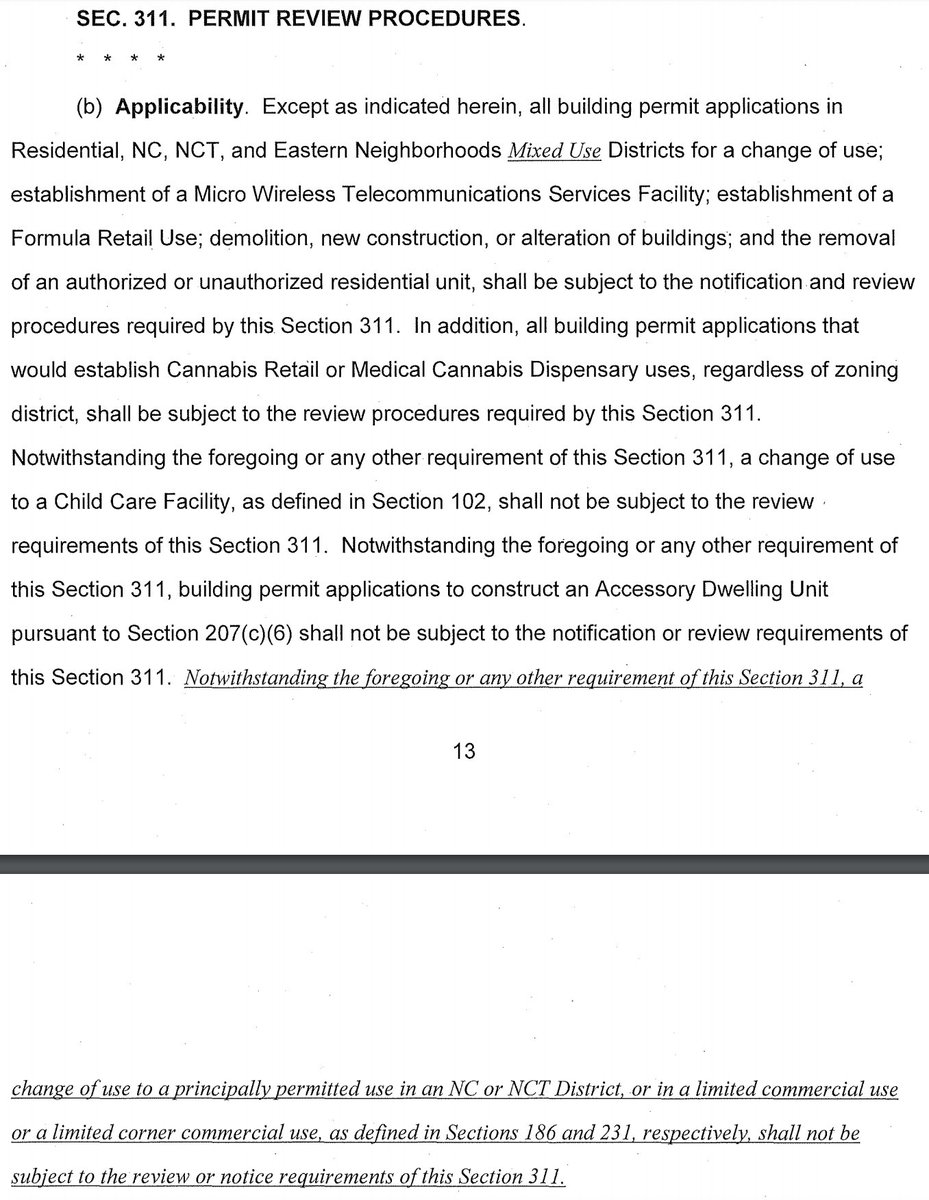

Section 311 can cost a small business tens of thousands of dollars, if not six figures. Frankly, it’s embarrassing that our Board of Supervisors has refused to change it and that a ballot measure is needed to solve it.
With permitting and temporary use changes out of the way, let’s focus on which uses are allowed for businesses. San Francisco gets really nitpicky about this stuff for no good reason.
First, SOSB changes the Planning Code to allow outdoor patios as a principal use when they meet certain conditions:
• At ground level
• Connected to a restaurant, not a bar
• Operated only between 9 AM to 10 PM
• There’s no outdoor bar
• At ground level
• Connected to a restaurant, not a bar
• Operated only between 9 AM to 10 PM
• There’s no outdoor bar

Vallie Brown tried to effect a similar change last year in a permit streamlining bill. However, it was removed due to neighborhood groups' lobbying + the Planning Commission. Here’s a blog post from Haight-Ashbury Neighborhood Council asking, "Where is the balance?" 

If you're HANC, I suppose the answer to that question can be found 7–10 months and tens of thousands of dollars later. The reply depends on how many people show up to argue in your favor during work hours on a Thursday.
The next change is for businesses in plots zoned residential areas. Previously, they would have to follow the rules of the nearest commercial district. This bill simplifies that so they have to follow NC-1 zoning. This is both dry and complicated.
You may ask—Why does this matter? how complicated are the rules for neighborhood commercial districts?
This matters because there are over 50(!) distinct neighborhood commercial districts in San Francisco. Most are for specific neighborhoods. Each can have its own rules.

This matters because there are over 50(!) distinct neighborhood commercial districts in San Francisco. Most are for specific neighborhoods. Each can have its own rules.
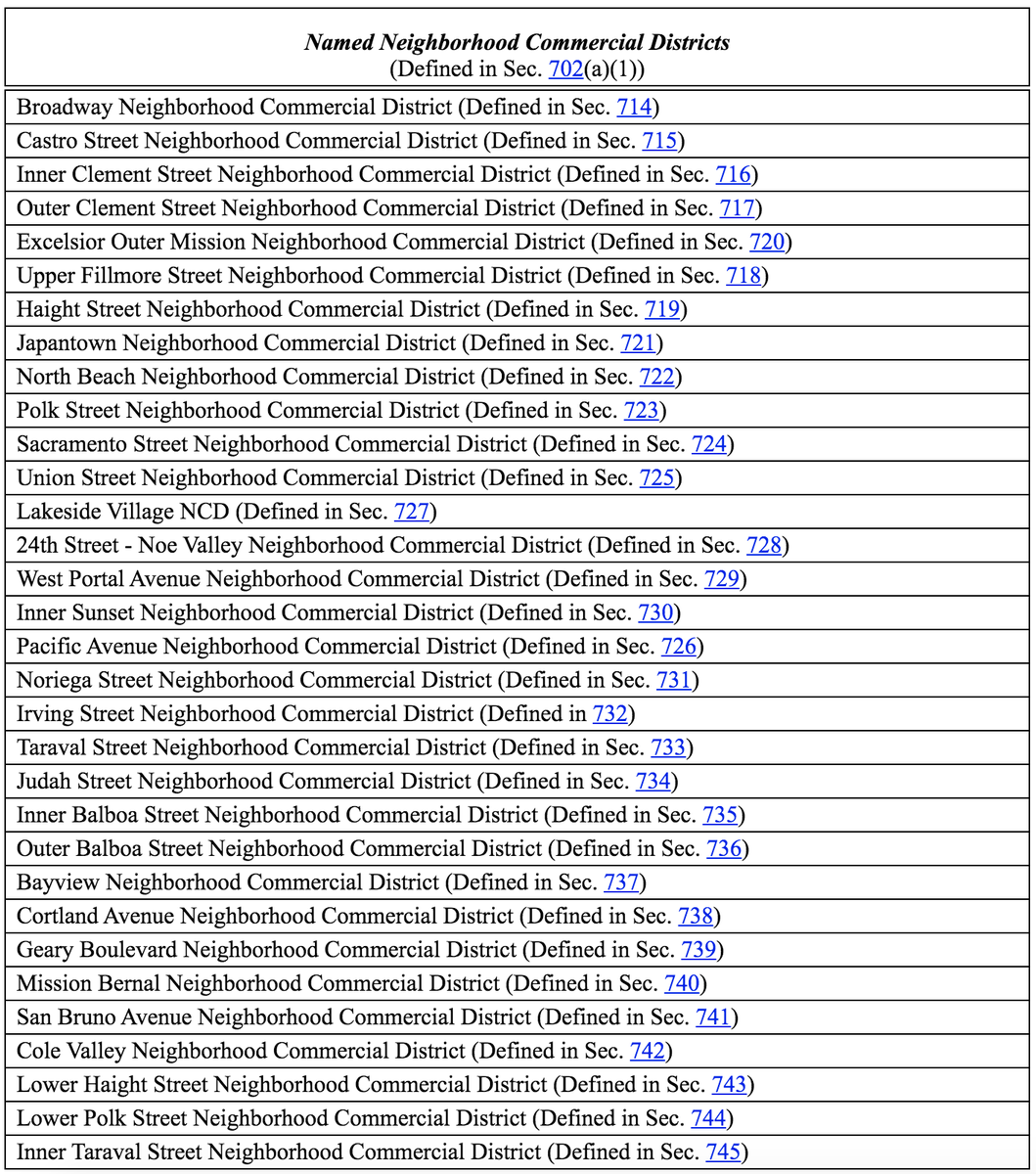
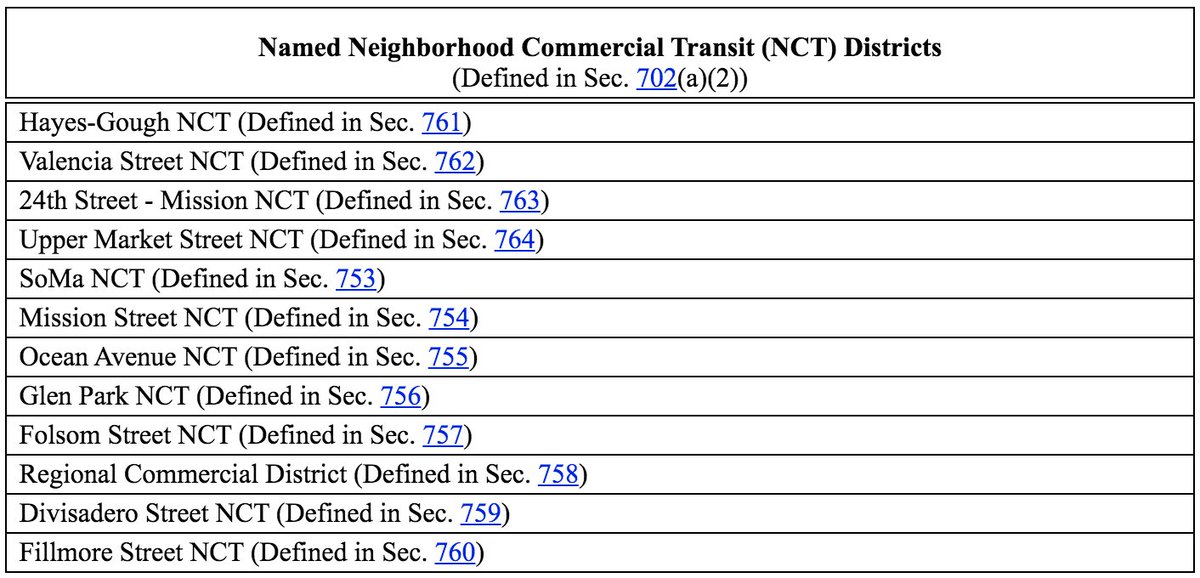
Why do we have a different commercial district for every neighborhood? Local control. Supervisors love it because they can have total say over whatever changes happen or don’t happen in their district.
Each district has a zoning control table. It's a big list of what uses are permitted in each commercial district, on the 1st–3rd floors. A "use" (restaurant, retail, etc.) can be permitted (P), conditional (C), or not permitted (NP).
SOSB has the goal of principally permitting many types of business, arts, and nonprofit uses. This means that it needs to modify zoning control tables for each and every neighborhood commercial district.
I won’t go through all of the districts. That would take forever. But here’s an example of some of the changes in the ballot measure. For instance, restaurants would be principally permitted in the Castro Street NCD. 

Previously, I've mentioned a 2019 City report which talked about commercial vacancies in the Castro. It recommended reducing the need for conditional use permits.
One year later, Supervisor Mandelman hasn’t done this—so a ballot measure has to. Shameful.

One year later, Supervisor Mandelman hasn’t done this—so a ballot measure has to. Shameful.
https://twitter.com/_fruchtose/status/1271538253749817344

There are also a couple sections protecting the effects of the ballot measure. It prevents bills from undoing the effects of this ordinance for three years, but other legislation could expand its effects. 
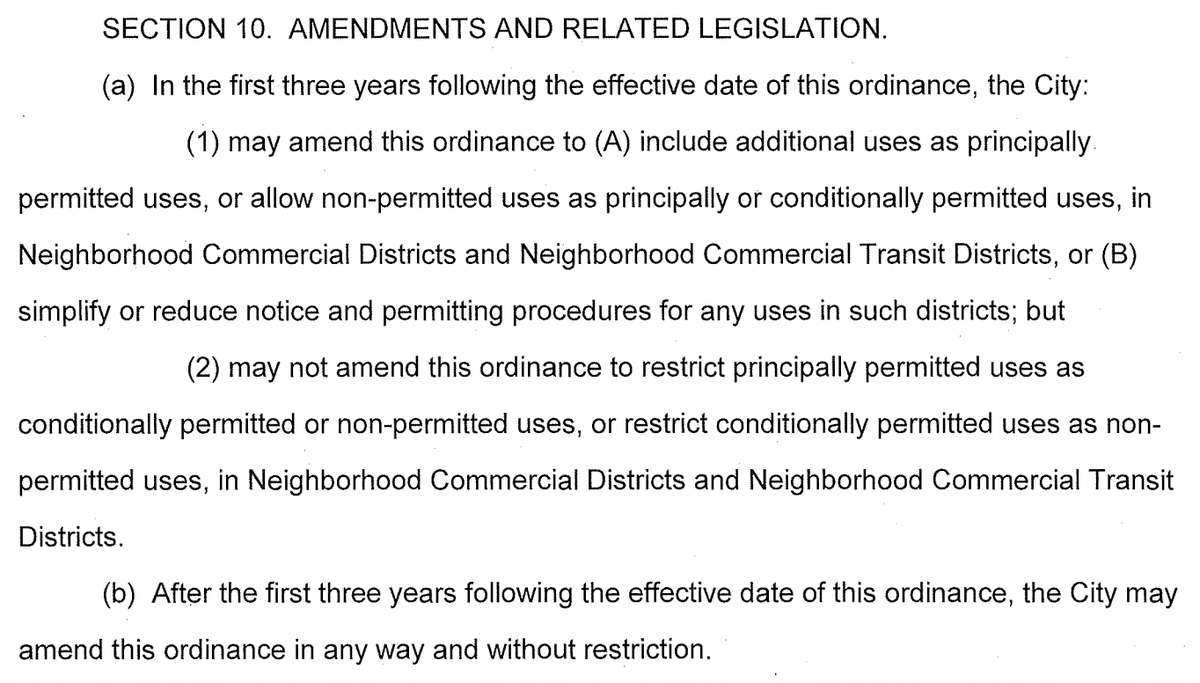
From everything I’ve seen, these changes are not controversial. The fact that we need to ask voters to make changes to permits—a subject which is almost never interesting—speaks to the cascading failures in San Francisco politics.
I believe that San Francisco neighborhoods can and should be vibrant places, and that we should avoid gentrifying commercial corridors with complicated processes only the rich can navigate.
If you agree with me, then please: Save Our Small Businesses. Thank you for reading.
If you agree with me, then please: Save Our Small Businesses. Thank you for reading.
• • •
Missing some Tweet in this thread? You can try to
force a refresh























